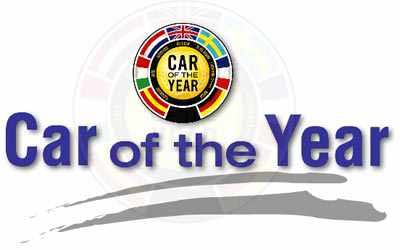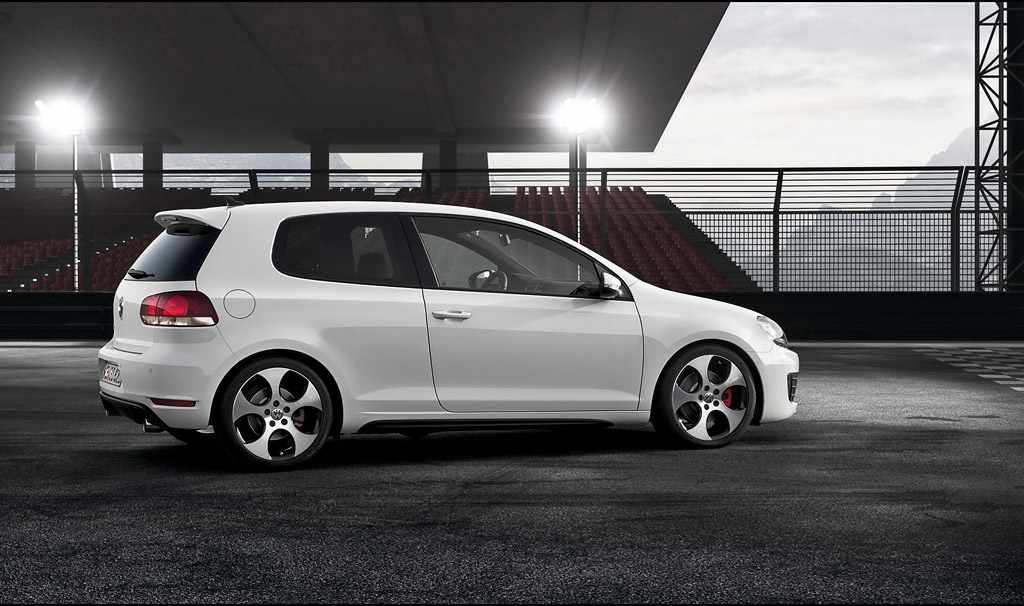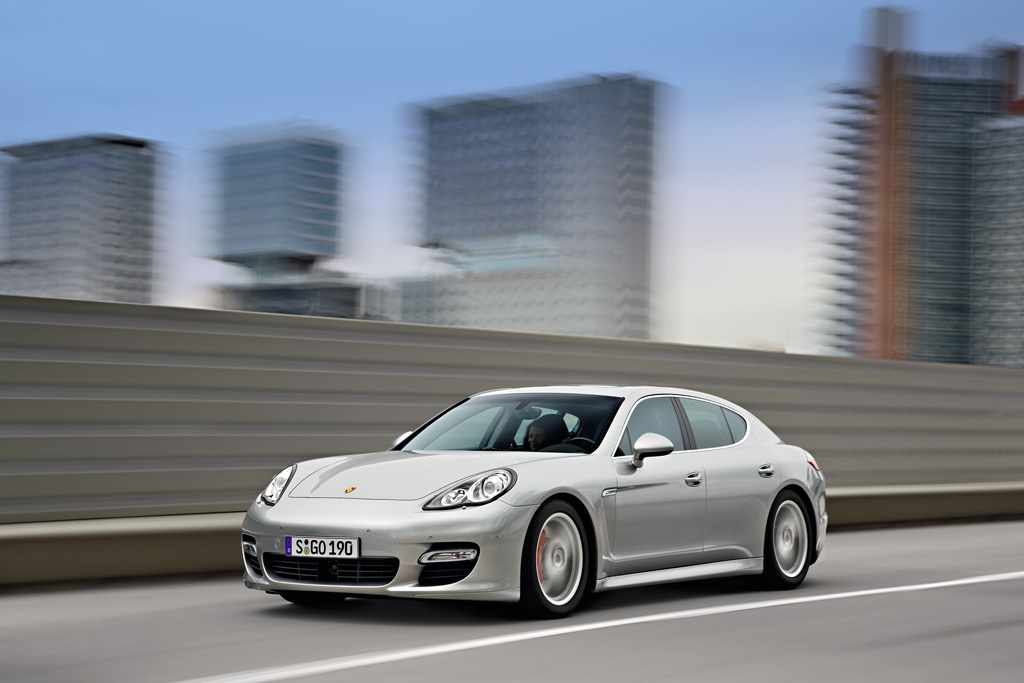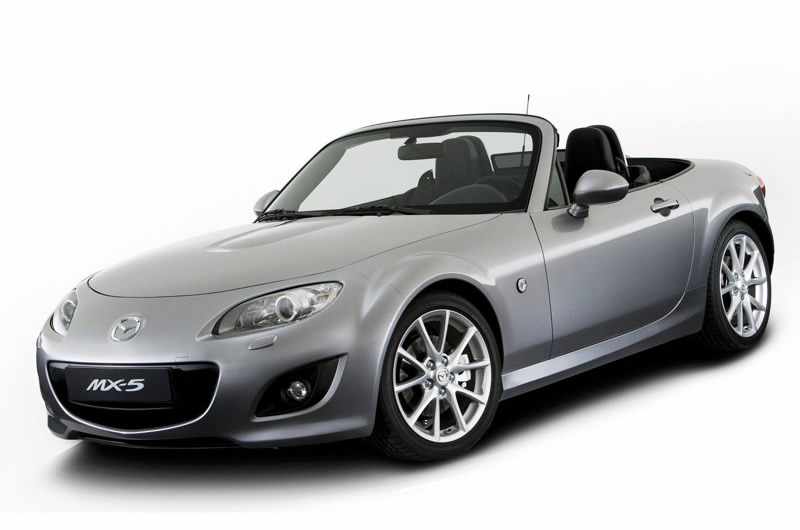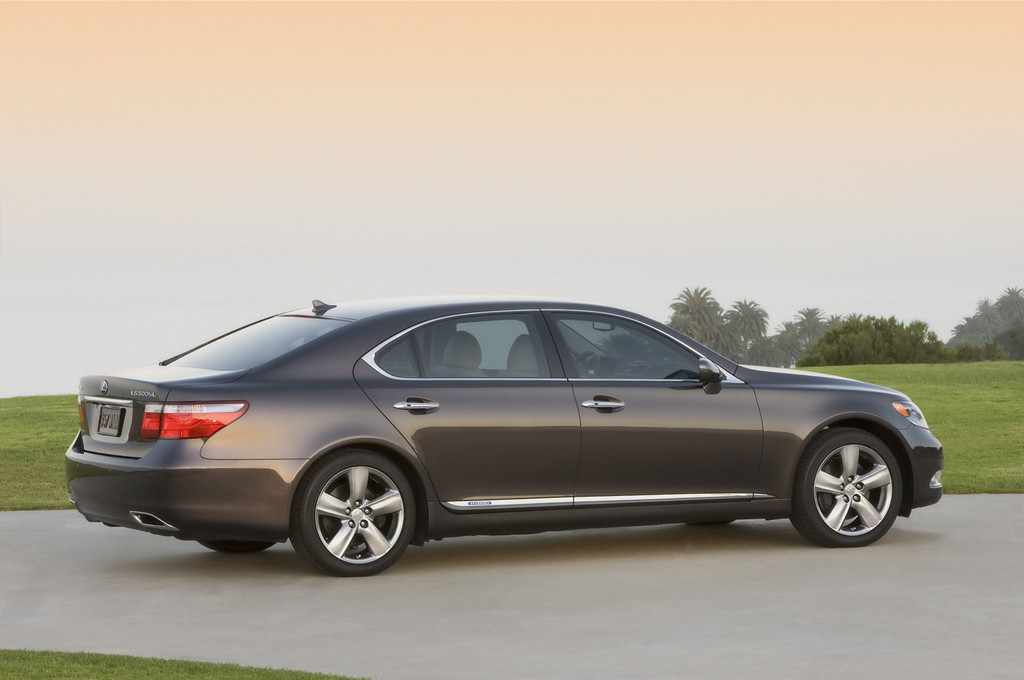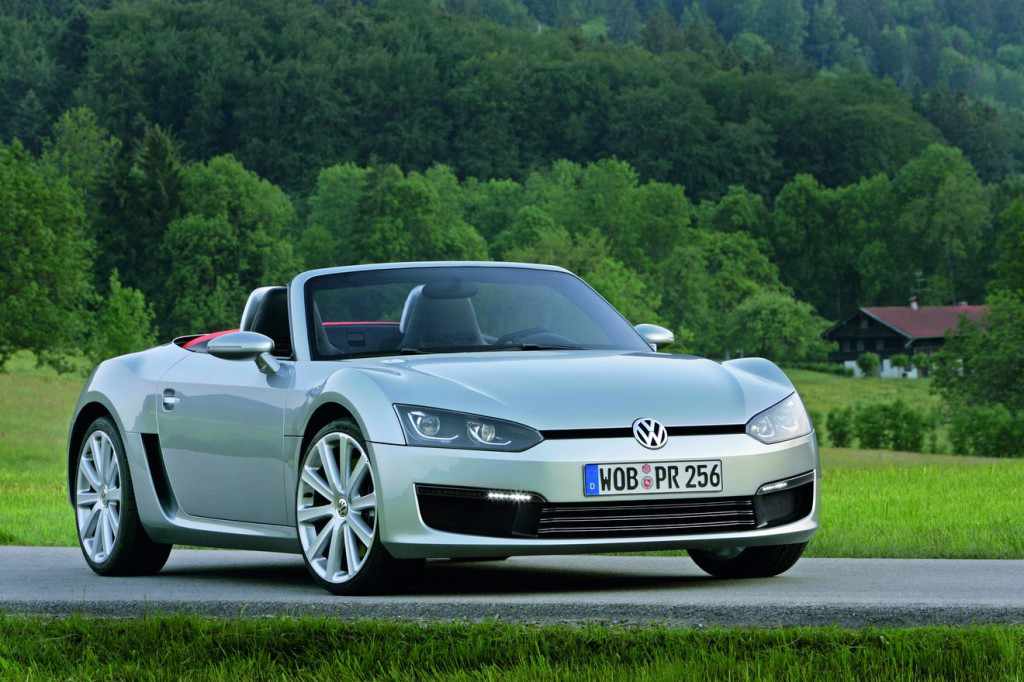Can you believe it’s already been a year since our inaugural COTY awards? Well it’s true. Last year at this time, we sat down and drew up an 8-category competition of the year’s best new cars. The category winners were as diverse as Apple’s App Store but only one car could walk away with the overall crown. In 2008, the Honda FCX Clarity appeared to have taken the glory for Japan, but then the Lamborghini Gallardo LP560-4 clubbed the Honda in the back of the head and snatched the title for Italy (and indirectly Germany).
As you will recall from last year, the winner of each category need not be the fastest in a straight line, nor on a circuit, nor have the best brakes, nor the sexiest styling. The winner of each category is the most desirable car among the nominees. It’s intangible and ephemeral, yes, but it’s also why we love cars. Also, considering the economic events of the last 12 months, the winner should also be conscious of the market’s more frugal buyers. Or at least those who want to appear to be more frugal in these times of penny pinching.
This year, the number of categories has swollen to nine, adding Concept of the Year to the list. The nominees were determined by our collective staff and whittled down to just one by closing our eyes and pointing to the list. Or maybe we deliberated until the sweat stung our eyes, who knows. If you’re wondering why cars like the new Ferrari 458 Italia, Lexus LFA, and the Mercedes SLS AMG aren’t on the list, it’s because they weren’t on sale in 2009. But watch out for those three heavyweights in 2010.
Without further ado, we present the CarEnvy Cars of the Year for 2009.



Small Car: Volkswagen MkVI GTI
Beating out the likes of the Mini Cooper, the reigning champion Honda Fit, and the MkVI Golf on which the GTI is based, the new GTI just had to be the most competent and multi-faceted vehicle in the segment. And it is. While the new MkVI platform is virtually unchanged from the previous generation, the MkV, the 2010 GTI is a further refinement of the proven formula. It’s not often that we see new generations of cars that don’t market an increase in power or torque, but Volkswagen is just that cocky. Or that good. They know that they can improve the looks, the feel of the interior, throw in some electronic jiggery like XDS and we’ll clamour to the “new” car like strippers to a pole. Much like Porsche has done with the 911 for the past forty-plus years. As the mantra goes, practise makes perfect.
Family Car: Porsche Panamera Turbo
This was a difficult category to adjudicate because of the sheer diversity of the contenders. While they are mostly four-door sedans (the Ferrari 612 Scaglietti being the only two-door), the price ranges and the cylinder counts were all over the map. There were superchargers and turbochargers and some were luxury-focused and others had stronger performance… What a mess. Alas, only one car made the most sense for a typical Canadian family of a husband, a wife, a son, and a daughter. That car is the Porsche Panamera Turbo. Automotive groupthink dictates that it is unbearably ugly and should therefore be relegated to Official Chauffeur Vehicle of the CNIB. We beg to differ. You just have to admire the form-follows-function approach of the Stuttgartians. It’s also Nissan GT-R-fast in a straight line and absolutely nothing to be ashamed of on the track, but that outright speed is only part of the attraction because the Panamera also boasts impeccable build quality and room for four people with more than a modicum of luggage. It’s therefore fast, comfortable, and the AWD allows you to use it year-round without being egged by environmentalists, like you would in your Cayenne. Although the incumbent in the Family Car category, the Mercedes C63 AMG, offers great value in its segment, the Panamera Turbo offers even greater value in its segment. Starting at only CDN$155,000, it runs circles around competitors like the CDN$234,000 Mercedes S65 AMG. For the honours, the Panamera Turbo beat out the BMW E90 M3 DCT, Mercedes C63 AMG, Ford Taurus SHO, Jaguar XFR, Ferrari 612 Scaglietti (it seats 4 so shush), Maserati Quattroporte GT-S, Cadillac CTS-V, and Mercedes E63 AMG. For sheer lust-worthiness, it really came down to the Panamera Turbo and the Ferrari. In the end though, rational considerations such as price, space, and usability were the tie-breakers. The winner, then, is the twin-turbo, AWD, 500hp, four-door from Porsche, the newest addition to the Volkswagen family.
Convertible: Mazda MX-5
With the skinniest tires, the smallest engine, and the least power of the group, the car née “Miata” is also the least expensive here. Not even by a little bit, but by a margin that would make your stock broker blush. You are probably now thinking that we’re off our rockers, that there is no way a Mazda (no matter how amazing) beat Europe’s finest machines. More specifically, that there is no way that a Mazda (no matter how amazing) beat the Lamborghini LP560-4 Spyder, Ferrari California, Pagani Zonda Roadster F, Bugatti Veyron Grand Sport, BMW Z4, Aston Martin DBS Volante, and Ferrari 430 Scuderia 16M. I mean come on! But it did. For fundamental simplicity and achievable limits, there is no car with the unfiltered experience of the Mazda MX-5. Those other cars require heroic nerves and matching chequebooks, not to mention a nearby track if you ever plan on approaching the limits of adhesion. The MX-5 can be just as much fun as those cars going 40 kph around a traffic circle. So you get to keep your driver’s license because you don’t have to drive 280 kph to notice that you’re moving. The MX-5 also has one of the most gratifying manual shifters around. And, if you’re so inclined, you can have your MX-5 with the best retractable hard-top any manufacturer makes. All this for under CDN$30,000? In these times of frugality, there’s none better.
Green Car: BMW 335d
Last year, the Tesla Roadster burst onto the green scene with a slew of electric promises. Turns out that electric promises are a bit like electronic mail, they work as intended but they don’t always replace the real thing. The real thing being internal combustion. Ok, somaybe that’s an allegorical stretch. The point is that the Tesla would take a month to drive from Vancouver to PEI, but the 335d could do the same trip in less than a week. Instead of stopping every 300 km to recharge for eight hours, the twin-turbo diesel 335d will crunch a 1000 km stretch of TransCanada and be ready to go again in minutes. Then there is the small matter of 425 lb-ft of torque just waiting to turn your “green” car’s rear tires into billowing vulcanized smoke. The combination of driving range, price, sleeper appeal, and performance placed the BMW 335d easily ahead of the Ford Fusion Hybrid, Toyota Prius, Tesla Roadster, and Volkswagen Golf MkVI TDI. This isn’t your father’s dirty diesel. This is a green car that doesn’t shout about it.
Sports Car: Audi R8 V10 5.2 FSI
This category was jam packed with cars that 11-year-olds put posters of on their walls, so you had better believe that it was a doozy to decide. The Mercedes CLK Black Series that won the award last year wasn’t nominated again this year because it has been replaced by the new E-Class Coupe. The CLK Black was a mighty last hoorah for senselessly powerful engines rammed into unsuspectingly small cars, and it remains the best car that the Black Series division of AMG has ever created. But the game has moved on, as they say. This year’s cohort included the Corvette ZR1, Lamborghini Gallardo LP560-4, Porsche 997.5 911 GT3 RS, Aston Martin V12 Vantage, Porsche 997.5 911 Turbo, Audi TT-RS, Lotus Evora, and the ever-so-sneaky-fast Nissan GT-R. And, of course, the Audi R8 V10 (or 5.2 FSI if you prefer). When Audi first showed us the R8, we were amazed by the balance that the company had found. Everything about the R8, despite its exotic looks, was austerely usable. Without ever having produced a true sports car before (with the exception of the Audi Sport Quattro), they bested the Porsche Carrera 4S in every conveivable category. With that victory in the record books, the next logical step was to gun for the Porsche Turbo, which would obviously require more power. More power came in the form of the Lamborghini Gallardo’s 5.2L V10, detuned slightly so as not to step on the toes of any raging bulls. Again, Audi has hit that desirable balance between livability and performance with the R8 V10. Still, why didn’t the better-looking, faster Gallardo LP560-4 win over a mere Audi? Because the Audi offers 99.5% of the performance, is less expensive, and looks like a restrained Saville Row suit rather than a hairy-chested international playboy. These days, it doesn’t pay to be too flashy. Either way though, it’s another win for the Volkswagen Auto Group (that’s now 3 awards, for those counting at home).
Supercar: Lamborghini Murciélago LP670-4 SV
Supercar. The term coined by the brilliantly eccentric, esoteric, and erudite LJK Setright, Editor of Britain’s CAR Magazine for 30 years and author of the accalimed Drive On!: A Social History of the Motor Car, a book we’re currently making our way through. But what is a “supercar”? Is it merely an stonkingly rapid car, merely a very expensive one, or something transcending logic? Probably a combination of the three. The collected cars in this category have some properly mind-numbing numbers to their credit. One supercar has 1000 hp, 16 cylinders, and 4 turbochargers. Another is known simply as “The Black” and is over 2.08 metres wide. Yet another from Maranello has a delicate V12 that can rotate a scarcely-believable 8400 times per minute. But numbers are only part of the sense of occasion that supercars instil. Since 2002, under the nurturing watch of parent company Audi, Lamborghini has been producing the venerable Murciélago, a supercar with the modernity and reliability that made its most recent forebears, the Countach and Diablo, look positively primordial. Seven years on, the Murciélago is bidding arrivederci to the supercar world with the SuperVeloce (SV) model. Power is up 30 hp to 670 and the 4WD system remains because, unlike Balboni’s special Gallardo, RWD in the Murciélago was deemed too certifiable even for Sant’Agata. What remains is the final word in overt extroversion. Even in economically depressed years, supercars have never been about being sheepish or timid. The Murciélago LP670-4 SV understands that better than any other.
Luxury Car: Lexus LS600h L
Last year’s winner, the sumptuous and extravagant Rolls Royce Phantom, is the world’s finest luxury automobile. Of that, there is no doubt. Where doubt creeps in is the area of the price tag and what driving a Rolls Royce says about its owner. If you listen closely to a Phantom as it glides by, you can hear the six-and-three-quarter litre V12 whispering in hushed tones “I don’t care”. In 2009, that is simply the wrong message. Of course, shoppers in this category still want their hugely imposing luxury sedans regardless of the economy, but a little bit of respect for the proletariat couldn’t hurt. Using these criteria, the Lexus LS600hL leaves the Rolls Royce Phantom, Mercedes S600, and the Bentley Flying Spur in the dust. The Lexus is vastly less expensive than the others at only $151,000 with every option box ticked and is the equal of any other in terms of opulence and isolation – to say nothing of reliability. Then there is the matter of the lower-case “h” badge on the trunk lid that denotes the inclusion of a hybrid powertrain to the existing 5.0L V8. Due to the weight of batteries and the inclusion of an all-wheel drive system, the LS600h L isn’t the fuel miser you might expect. Just don’t tell anyone that you bought a $150,000 hybrid luxury sedan for yourself, they think you did it for the planet.
Concept of the Year: Volkswagen BlueSport
This is a new category for the CarEnvy COTY Awards. It warranted inclusion because so much of what we cover in the industry and at the auto shows is made up of concept cars. Most are thinly veiled glimpses at near-future production cars, while others are outlandish expressions of a company’s new design philosophy or future design direction. These days, the latter are in disappointingly short supply. As (seat) belts tighten, automakers are decreasingly likely to fund wild and creative prototypes. This creates a paradox where companies no longer have the long-term vision required to extract them from the rut of the current automotive market. Still, the concepts we see at auto shows around the globe are always the highlights because they’re anything but stagnant. They show a brighter, happier, and more complete future than the disheveled reality of today’s market. The contenders for the inaugural Concept of the Year Award included the Subaru Hybrid Tourer, Volkswagen BlueSport, Toyota FT-86, Audi E-Tron, BMW EfficientDynamics, Aston Martin Cygnet, Bugatti Galibier, and Mazda MX-5 Superlight. The Volkswagen BlueSport wins the award for showing the most exciting and environmentally responsible look forward. With RWD, a manual gearbox, a convertible top, and a powerfully frugal diesel engine mounted mid-ship, the BlueSport represents near perfection for many, CarEnvy included. While the diesel wouldn’t provide the most sonorous experience, we can’t help but day-dream of open air motoring in a perfectly balanced roadster that sips fuel like your father sips scotch. If most automakers believe that the future is plug-in electric or hydrogen electric vehicles, the VW BlueSport wants us to know that there are other paths.
Car of the Year: Porsche Panamera Turbo
Porsche is best known for relentlessly making a single model of sports car with the engine in the trunk. To overcome the inherent difficulties that a rear-engine placement exposes when going around a corner, Porsche has spent the past four decades employing hordes (flocks? gaggles?) of engineers to slowly but surely iron out the wrinkles. This is why we have automotive masterpieces like the 911 GT3 today; it’s all thanks to that steadfast stubbornness of the men and women in Stuttgart. But perhaps that’s too harsh. Had Porsche not broadened its line-up to include an SUV in 2002, the company may no longer exist. In 2009, with the Panamera, Porsche again took the risk of estranging its core customers, this time with a four-door sedan. The risk has paid off. Core customers, despite their empty threats to the contrary, will continue to buy the 911 in droves because it is quite simply brilliant. Those buyers in the market who are not retired dentists and who do have families (or friends) now have access to the best four-door money can buy. The Panamera is everything that inherently compromised vehicles, like the BMW X6, wish they could be. Not only is the Panamera Turbo supremely fast, unbelievably well-built, and reasonably practical, but it is also moderately attractive. It’s everything. It’s the Car of the Year.

